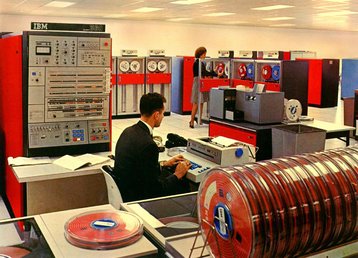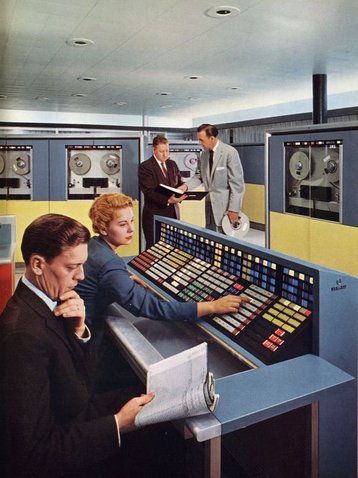The Asia-Pacific region is widely known for its strong economic growth, with a steady influx of investments and the establishment of new offices by multi-national companies looking to tap into the developing markets here. Unsurprisingly, this has served to fuel the growing demand for data centers and cloud services.
Beyond the prosperous facade, however, hides the inescapable fact that data centers in the region are getting older. Indeed, that sentiment was expressed by a couple of senior data center executives in the region when they spoke to DatacenterDynamics last month.
With this in mind, we take a deeper look at the state of the ageing data centers here, their impact, and what it means for the data center and cloud industry.
Asia’s ageing data centers
Citing a recent study that was undertaken in 2015, Simon Piff, the associate vice president, enterprise infrastructure at IDC Asia told Datacenter Dynamics that 20.9 percent of respndents indicate that a sizeable proportion of their data center estate has been in operation for close to a decade.
“The first major round of data center construction in Asia came to a halt at the end of the Dotcom boom in 2001, and there was very little new stock built until the end of the decade,” said Giles Proctor, vice president of data center services at Pacnet as he sought to shed light on the ageing data centers in the region.
Proctor should have a good inkling of the regional landscape, given Pacnet’s strong presence in the region with 19 data centers spread over 15 cities across ten Asia-Pacific countries. Taking his explanation at face value, this means that some of the data centers that are still in operation could be really old. (Pacnet was recently acquired by Telstra; you can read more about it in “Why Telstra is paying $700M for Pacnet”).
“When the dot-com bubble occurred in the 1990s, so did the boom of data centers. Those data centers that are still in operation are over 15 years of age,” confirmed Thiam Poh Goh, the director of operations at Equinix for the Asia-Pacific region. “This, then, creates an issue with regards to the physical condition of those data centers and the infrastructure that has been put in place to operate them.”
Though the life span of data centers is typically expected to be between 10 and 15 years, rapid changes in technology processes in recent years meant that these older data centers are probably far from optimal when it comes to meeting modern compute demands.
It’s all about power and cooling
One major development in recent years would surely be the popularization of server virtualization and the rise of cloud computing, both of which contributed to a dramatic increase in processor utilization – increasing the average energy draw per microprocessor across the industry. This was followed by significant advances in energy efficient processors, which culminated in more compute capacity being packed into a much smaller volume of space than before.
Unsurprisingly, this has a significant impact on the data center, as the average power density requirement goes through the roof. Older data centers are mostly designed for loads of 1-2kVA per rack, according to Proctor, which he says is not sufficient for most deployments today.
Moreover, while efficiency in terms of compute per watt has risen, the significantly higher density of compute units being crammed together translates to a greater amount of waste heat that has to be removed. This is something that the cooling systems of older facilities are likely to struggle with, given the very different design requirements a decade ago.
“When older data centers were built, they were not designed to accommodate the strain we place upon them today,” said Tony Gaunt, the director of Internet data centers in Asia, Emerson Network Power. “With virtualization and IoT [Internet of Things] becoming an increasingly popular trend, round-the-clock access has become a necessity, the power upkeep from cooling systems required to keep things running can be a huge drain for older data centers.”
Finally, older data centers are also less energy efficient than new data centers. This is typically due to older, less efficient power and cooling design, a factor that cannot be easily overcome without an extensive retrofit.
To move or not to move
So should organizations simply pack up and move to newer data centers? Hardly. After all, there is a large capital outlay in planning, manpower, and potential downtime costs to consider when migrating one’s physical assets to a new location. And given the inevitable IT risks that such an endeavor would entail, organizations need to ask themselves if the advantages offered by a new location are genuinely worth the trouble.
Another critical but sometimes overlooked consideration is whether a new data center has the requisite network connectivity in place. Depending on the nature of business, the lack of a specific Point-of-Presence (PoP) from an Internet service provider or telecommunications provider could be a deal-breaker.
“Customers additionally require a secure physical infrastructure, direct access to a robust, interconnected ecosystem of network, cloud and IT service providers, as well as a variety of solutions to help them increase revenue and enhance performance,” said Thiam in response to some of the most sought after capabilities by customers.
A recent case in point would be the expansion of Host Virtual into Singapore. The cloud service provider announced that it will be setting up a presence at Epsilon’s New Tech Park data center at Lorong Chuan, citing its access to about 500 carriers there as a reason.
Of course, the rise of cloud services mean that some organizations may simply use the opportunity to shift part or all of their IT from an on-premises deployment into the cloud.
“If an organisation is able to outsource, either to a cloud or managed service, any IT that is not offering any competitive differentiation, and the economics make more sense, then it begs the question as to why it should be deployed onsite,” noted Piff.
Meeting the new standards
Given that all data centers will get old eventually, are data center operators well prepared for n the time comes around to upgrade?
“At Equinix, we have a structured way of reviewing our facilities globally for operational status and have a lifecycle management program,” said Thiam. “We make it a point to refresh our older facilities and review how our infrastructure can be upgraded to maintain a premium data center offering.”
“The days of shutting down a data center are long gone; operators and their customers now expect sites to remain ‘always on’,” notes Gaunt. “So upgrades are an important element of data center life–maintaining the successful operation whilst upgrading to current best practices.”
According to Gaunt, achieving the status of green IT is “quite possible” without migrating to newer facilities. He cited identifying obstructions to air flow as an example of how efficiency can be improved without ripping everything apart. “Apart from upgrades and renovation, streamlining the components of existing data center infrastructures may often make noticeable impacts at minimal costs,” he told us.
And when it comes to performing an in-situ upgrade, at least one data center in the region has proven that the concept is doable. As we reported last month, CLP Power Hong Kong had carved out a high energy efficiency (HEE) zone from its decade-old facility, and did it so well that they were awarded a gold under the CEEDA certification designed to identify green data centers.
“Consider the rapid changes in technological processes, the introduction of new more efficient form factors, changes in network strategy, the ever evolving complexity of security issues and the increasing cost of power as a percentage of data center OPEX, IDC believes that there is a need for many of these data centers to be refreshed, in terms of both the physical facilities they occupy and the technology that is deployed within them,” wrote Piff.
In a nutshell, older data centers have no choice but to upgrade.



